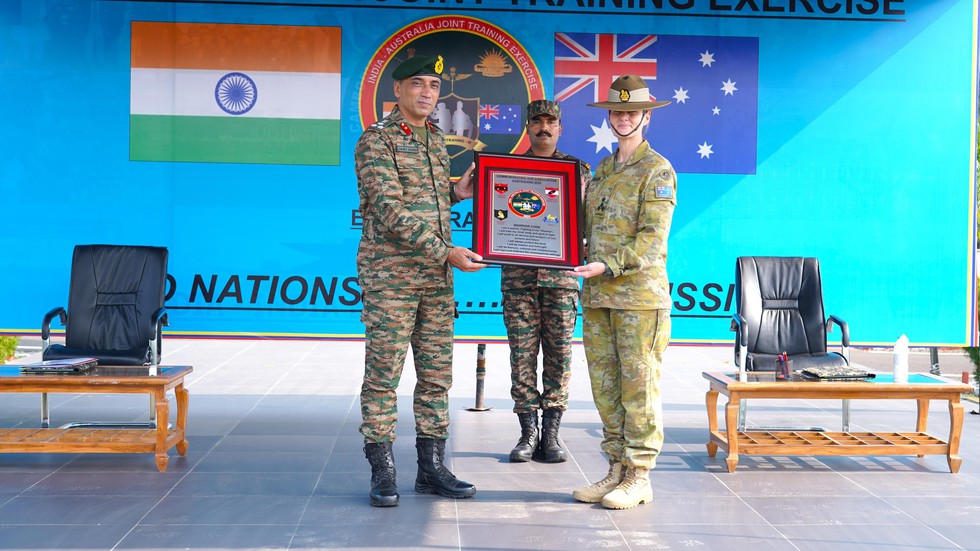
About Exercise AUSTRAHIND:
- It is a joint military exercise held between India and Australia.
- It is an annual event conducted alternatively in India and Australia. The last edition of the same exercise was conducted in Australia in December 2023.
- The Indian contingent comprising 140 personnel will be represented mainly by a battalion of the DOGRA Regiment and 14 personnel from the Indian Air Force.
- Exercise AUSTRAHIND aims to promote military cooperation between India and Australia through the enhancement of interoperability in the conduct of joint sub-conventional operations in semi-urban environments in semi-desert terrain under Chapter VII of the UN mandate.
- The exercise will be conducted in two phases – combat conditioning and tactical training phase and validation phase.
- Drills/ aspects to be rehearsed during the exercise will include response to a terrorist action of capturing a defined territory; establishment of a Joint Operations Centre; conduct of joint counter-terrorism operations like Raid and Search and Destroy Missions; securing of a helipad; employment of drones and counter-drone measures and Special Heli Borne Operations, among others.
- Significance: It will enable the two sides to share their best practices in tactics, techniques and procedures for conducting tactical operations.
2. INS Vikrant

About INS Vikrant:
- It is India’sfirst indigenously designed and manufactured aircraft carrier.
- The ship has been designed in-house by the Indian Navy’s Warship Design Bureau and constructed by M/s Cochin Shipyard Limited.
- It strengthens the country’s standing as a ‘Blue Water Navy’ — a maritime force with global reach and capability to operate over deep seas.
- With it, India also joined the elite group of nations – the US, Russia, France, the UK and China – who are capable of designing and constructing aircraft carriers.
- Features:
- Its full-load displacement is 43,000 tonnes.
- Endurance: 8,600 miles (13,890 kilometres)
- Aircraft capacity: It can accommodate up to 30 fixed-wing aircraft, including fighter jets, and rotary-wing aircraft, such as anti-submarine warfare helicopters and utility helicopters.
- It can operate an air wing of 30 aircraft comprising MiG-29K fighter jets, Kamov-31, and MH-60R multi-role helicopters, in addition to indigenous Advanced Light Helicopters and Light Combat Aircraft (Navy).
- It uses the STOBAR(Short Take-Off but Arrested Recovery) method to launch and recover aircraft for which it is equipped with a ski-jump launch aircraft and three ‘arrester wires’ for their recovery.
3. Cyanobacteria

About Cyanobacteria:
- These are also called blue-green algae, are microscopic organisms found naturally in all types of water.
- These single-celled organisms live in fresh, brackish (combined salt and fresh water), and marine water.
- These organisms use sunlight to make their own food.
- In warm, nutrient-rich (high in phosphorus and nitrogen) environments, cyanobacteria can multiply quickly, creating blooms that spread across the water’s surface.
- Cyanobacteria blooms can form in warm, slow-moving waters that are rich in nutrients from sources such as fertilizer runoff or septic tank overflows.
- It needs nutrients to survive. The blooms can form at any time, but most often form in late summer or early fall.
Key facts about Chonkus
- It was discovered in the shallow sunlit waters off the coast of Italy’s Vulcano Island, where volcanic gas-rich groundwater seeps into the sea.
- It has the capacity to absorb a lot more carbon than the average cyanobacteria floating in the ocean.
4. Sagarmala Parikrama
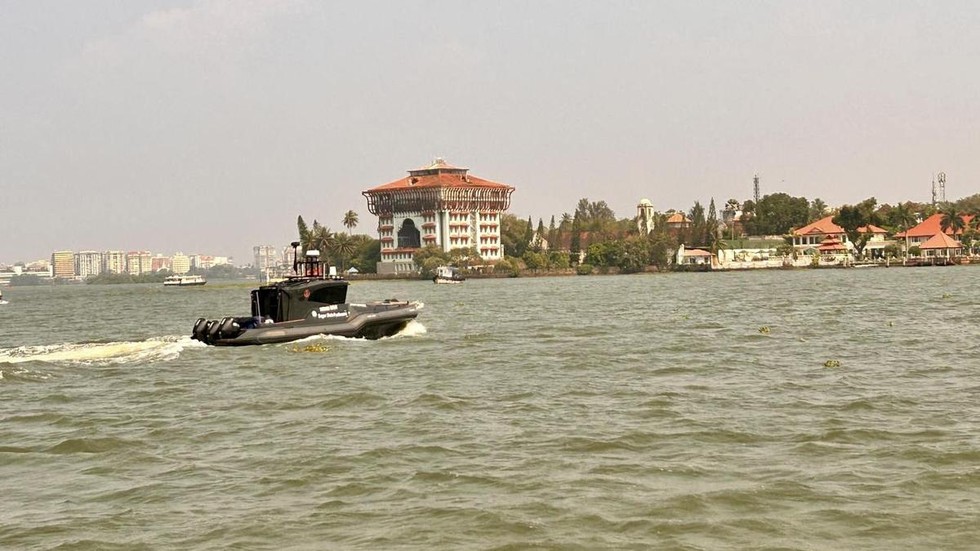
About Sagarmala Parikrama:
- Sagarmala Parikrama's journey was virtually flagged off by the Union Defence minister on October 29 during the Swavlamban event.
- It is supported by the Indian Navy’s Naval Innovation and Indigenisation Organisation (NIIO), Technology Development Acceleration Cell (TDAC), and the Innovations for Defence Excellence (iDEX).
- The Sagarmala Parikrama aligns with global advancements in autonomous surface and underwater systems, offering transformative applications in both military and civilian sectors.
- This first-of-its-kind journey highlights India’s growing expertise in autonomous maritime technology and establishes a significant milestone in developing cutting-edge, unmanned systems for national security.
- Applications: It paves the way for future deployment of autonomous vessels in critical sea lanes, coastal surveillance, and anti-piracy operations, expanding the Indian Navy’s operational reach.
Key facts about the Naval Innovation and Indigenisation Organisation
- It is a three-tiered organization launched by the Defence Ministry.
- The Naval Technology Acceleration Council (N-TAC)will bring together the twin aspects of innovation and indigenisation and provide apex-level directives.
- A working group under the N-TAC will implement the projects.
- A Technology Development Acceleration Cell (TDAC) has also been created for the induction of emerging disruptive technology in an accelerated time frame.
5. PyPIM Platform

About PyPIM Platform:
- It combines the Python programming language with digital processing-in-memory (PIM) technology.
- It uses new instructions to enable operations to be performed directly in memory.
- The platform allows developers to write software for PIM computers using familiar programming languages like Python.
- The researchers aim to tackle the “memory wall” problem, where increases in processor speeds and memory capacity outpace data transfer rates.
- This innovation addresses the energy- and time-intensive data transfers between memory and the CPU, which have increasingly become bottlenecks in modern computing.
- By performing some computations in memory, this approach reduces dependence on the CPU, leading to significant time and energy savings.
- Traditional computer programs rely on separate hardware components for memory and processing, requiring data to be transferred from memory to the CPU for computation.
- To support in-memory computing, the researchers developed a platform called PyPIM.
6. Key facts about Zambia
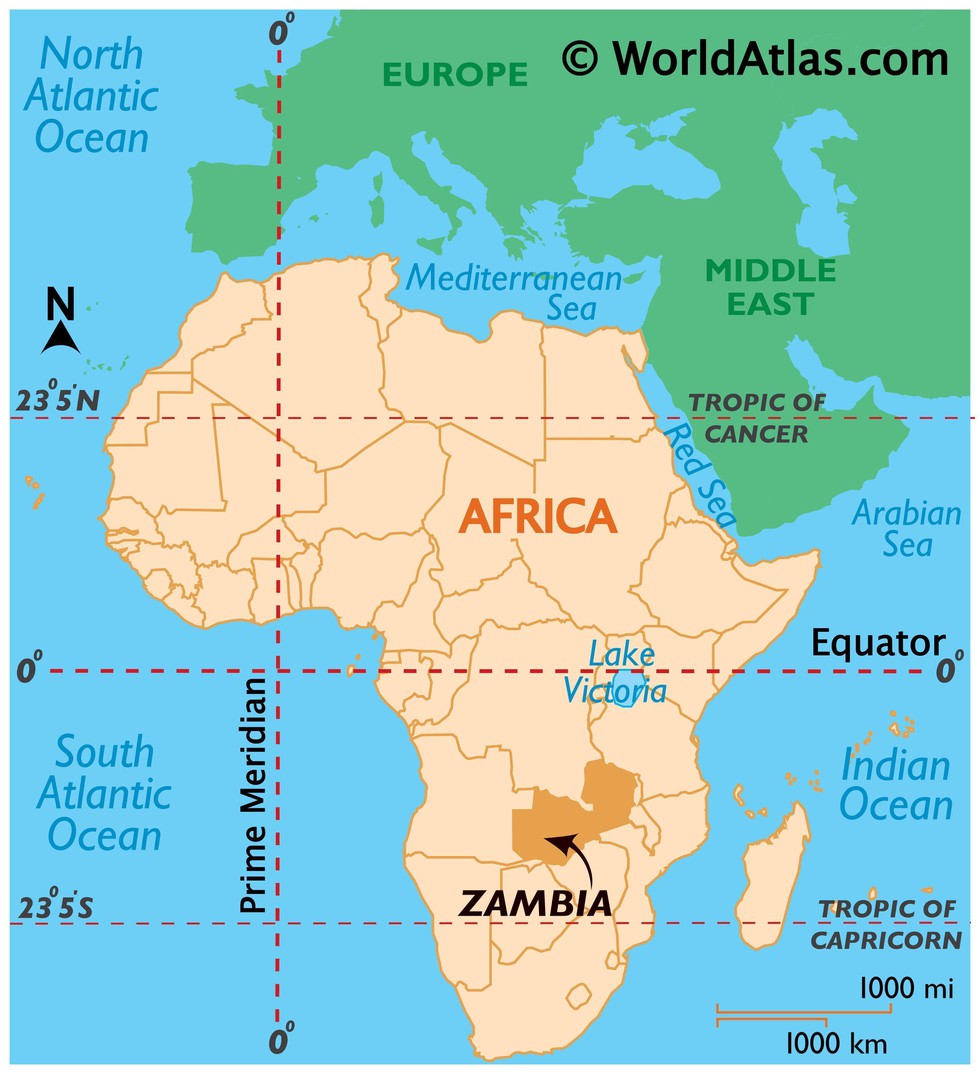
About Zambia:
- It is a landlocked country in south-central Africa.
- It is situated on a high plateau and takes its name from the Zambezi River, which drains all but a small northern part of the country.
- Bordering countries:
- It is bounded to the north by the Democratic Republic of the Congo, and to the south by Zimbabwe and Botswana.
- Tanzania borders the country to the northeast, Malawi to the west and Mozambique to the southeast. Angola borders Zambia to the west and Namibia to the southwest.
- Economy: Zambia’s economy is heavily dependent on mining, in particular the mining of copper.
- Most Zambians speak Bantu languagesof the Niger-Congo language family.
- Major waterfall:Victoria Falls on Zambezi River.
- Zambia is home to Lake Kariba, the largest artificially created reservoir in the world by volume. It was created by constructing the Kariba Dam on the Zambezi River.
- Capital city: Lusaka
7. Digital Population Clock

About Digital Population Clock:
- It will access real-time estimates of Karnataka’s and population of India.
- The project was jointly taken up by ISEC, and the Union Ministry of Health and Family Welfare (MoHFW).
- It would update the figures of the state’s population every 1.10 minutes (one minute 10 seconds) and the country’s population every two seconds.
- It aims to increase awareness of population dynamics and provide accurate data for research.
- The Ministry of Health and Family Welfare (MoHFW) is installing similar clocks in 18 Population Research Centres across India.
- The clock has been equipped with a satellite connection for precise timekeeping. It operates autonomously with all necessary components integrated into the system.
- It is also equipped with state-of-the-art software and tools to facilitate detailed demographic studies.
- Significance: The clock will play a pivotal role in advancing our understanding of population trends.
- The new census data research workstation would further strengthen academic research, policy analysis, and capacity building in population studies.
8. Horn of Africa

About Horn of Africa:
- It is the easternmost extension of African land.
- It comprises the countries of Djibouti, Eritrea, Ethiopia and Somalia.
- Part of the Horn of Africa region is also known as the Somali peninsula.
- It contains such diverse areas as the highlands of the Ethiopian Plateau, the Ogaden desert, and the Eritrean and Somalian coasts and is home to the Amhara, Tigray, Oromo, and Somali peoples, among others.
- Costal line: Its coasts are washed by the Red Sea, the Gulf of Aden, and the Indian Ocean, and it has long been in contact with the Arabian Peninsula and southwestern Asia.
- The Horn of Africa is separated from the Arabian Peninsula by the Bab el-Mandeb Strait (the strait connecting the Red Sea and the Gulf of Aden).
- The region faces severe food insecurity, worsened by the climate crisis and conflict, and malnutrition and cholera are key challenges.
9. Competition Commission of India
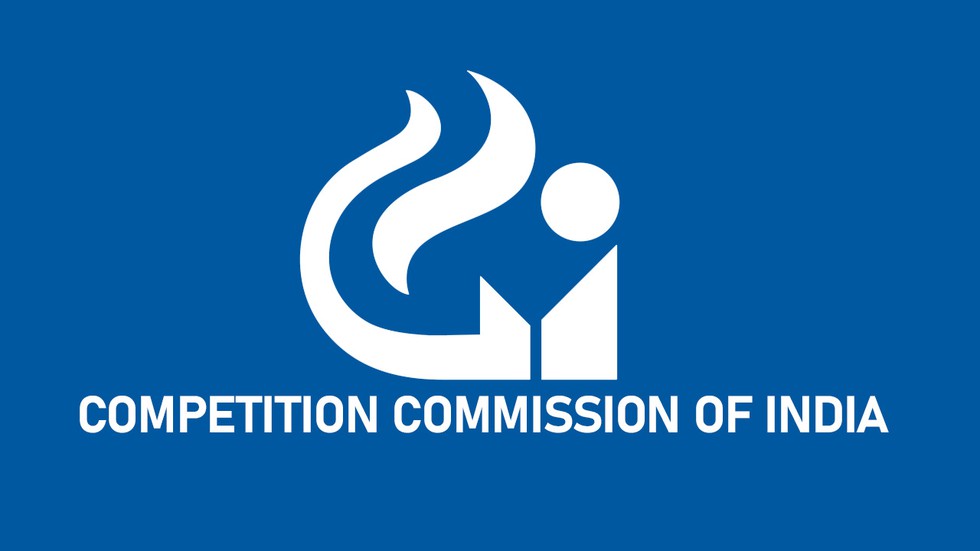
About Competition Commission of India:
- It is a statutory bodywhich was established in March 2009 under the Competition Act, 2002.
- The goal of CCI is to create and sustain fair competition in the economy that will provide a ‘level playing field’ to the producers and make the markets work for the welfare of consumers.
- The priority of the Commission is to eliminate practices having adverse effects on competition, promote and sustain competition, protect the interests of consumers, and ensure freedom of trade in the markets of India.
- Mandate: To implement provisions of The Competition Act, 2002 which –
- prohibits anti-competitive agreementsand abuse of dominant position by enterprises;
- regulates mergers and acquisitions (M&A) which can have an adverse effect on competition within India. Thus, deals beyond a certain threshold are required to get clearance from CCI.
- It oversees the operations of big enterprises to ensure they are not abusing their ‘dominant position’ or power by controlling supply, setting up high purchase prices, or adopting practices that are unethical and may harm budding enterprises.
- Composition:
- It has the composition of a quasi-judicial body, with one chairperson and six additional members.
- All members of the CCI are appointed by the Central Government.
- Headquarters: New Delhi.
10. Equine Piroplasmosis
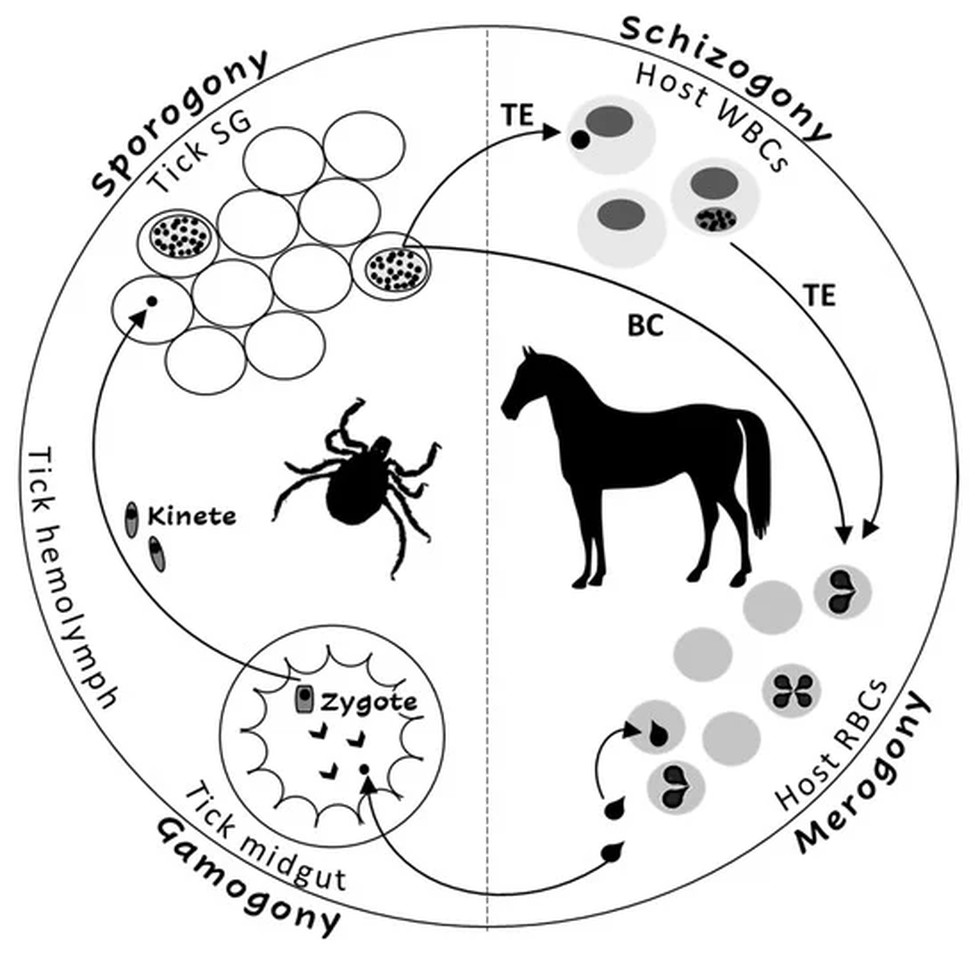
About Equine Piroplasmosis:
- It is a tick-borne protozoal disease of horses, mules, donkeys and zebra.
- Transmission: Infected animals may remain carriers of these blood parasites for long periods and act as sources of infection for tick vectors. These parasites are also easily spread by blood-contaminated instruments.
- It is endemic in tropical and temperate areas of the world with ticks capable of carrying the disease.
- Symptoms:
- The clinical signs of equine piroplasmosis are often nonspecific, and the disease can easily be confused with other conditions.
- Piroplasmosis can occur in peracute, acute and chronic forms.
- The acute cases are more common and are characterised by fever that usually exceeds 40°C, reduced appetite and malaise, elevated respiratory and pulse rates, congestion of mucous membranes, and faecal balls that are smaller and drier than normal.
- Treatment: There are no vaccines available.
Key facts about World Organisation for Animal Health
- It was founded in 1924 as the Office International des Epizooties (OIE), in May 2003 it adopted the common name World Organisation for Animal Health.
- It is an intergovernmental organization which focuses on transparently disseminating information on animal diseases, improving animal health globally and builds a safer, healthier and more sustainable world.
- It was founded as a response to a cattle plague called rinderpest, which swept across the globe, ravaging livestock and devastating livelihoods.
- Members: 183 Member countries. India isone of the member
- Headquarter: Paris


























































































































































.png)
.png)
.png)
.png)
.png)


.png)
.png)
.png)





.png)
.png)






.png)
.png)
.png)
.png)
.png)
.png)
.png)
.png)
.png)

.png)







.png)
.png)


.png)
.png)
.png)


.png)

.png)
.png)





.jpg)

.png)
.png)


.png)

.png)
.png)
.png)

.jpg)

.jpg)


.png)

.png)
.png)
.png)
.png)
.png)
.png)
.png)
.png)
.png)
.png)




.png)

.png)





.png)
.png)
.png)
.png)
.png)
.png)
.png)
.png)
.png)
.png)
.jpg)
.jpg)

.png)
.png)
.png)
.png)
.png)
.png)
.png)
.png)
.png)
.png)
.png)
.png)
.png)
.png)
.png)
.png)
.png)
.png)
.png)
.png)
.png)
.png)



.png)
.png)

.jpg)
.jpg)


.jpg)
.jpg)
.jpg)
.jpg)
.jpg)

.jpg)








.jpg)
.jpg)
.jpg)
.jpg)
.jpg)

















.jpg)
.jpg)







.jpg)


















.jpg)
.jpg)






























































































.jpg)
.jpg)


























.jpg)

.jpg)










.jpg)








.jpg)




.jpg)










.jpg)


















.jpg)












































.jpg)














.jpg)
.jpg)
.jpg)





.jpg)

.jpg)
.jpg)





































































.jpg)


































.jpg)
.jpg)
















































.jpg)












.jpg)


.jpg)




.jpg)
.jpg)
.jpg)

.jpg)
.jpg)
.jpg)
.jpg)

.jpg)
.jpg)
.jpg)

.jpg)
.jpg)
.jpg)
.jpg)
.jpg)
.jpg)
.jpg)
.jpg)

.jpg)


.jpg)
.jpg)
.jpg)
.jpg)
.jpg)
.jpg)
.jpg)
.jpg)
.jpg)
.jpg)











.jpg)
.jpg)





.jpg)
.jpg)
.jpg)
























.jpg)
























.jpg)









.jpg)
.jpg)







.jpg)
.jpg)









































.jpg)
.jpg)
.jpg)
.jpg)
.jpg)

.jpg)
.jpg)
.jpg)
.jpg)
.jpg)


.jpg)
.jpg)
.jpg)
.jpg)
.jpg)

.jpg)
.jpg)
.jpg)
.jpg)
.jpg)
.jpg)
.jpg)
.jpg)
.jpg)
.jpg)
.png)

.png)
.png)

.png)
.png)
.png)
.png)


.jpg)
.jpg)

.jpg)
.jpg)
.jpg)

.png)
.png)
.png)
.png)
.png)
.png)
.png)

.png)
.png)
.png)
.png)
.png)
.png)
.png)
.png)
.png)
.png)





































































-min.png)



.png)




.png)








































